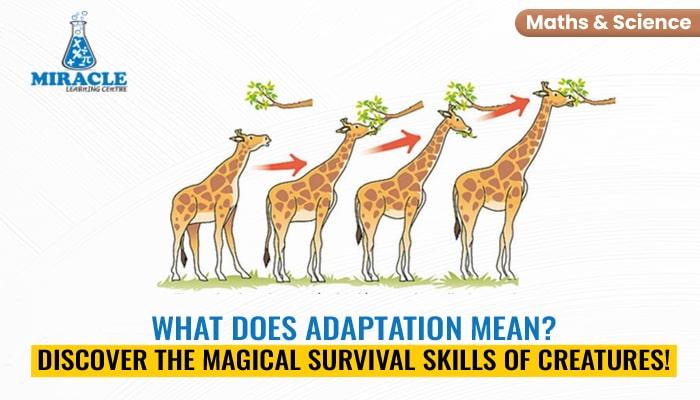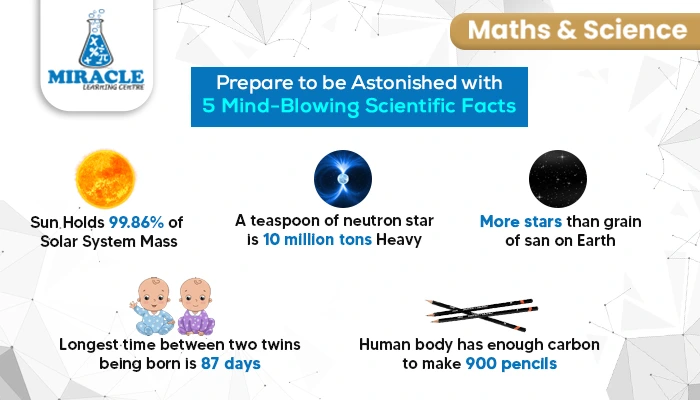Nature is an ever-evolving tapestry woven with the threads of adaptation, a fundamental mechanism that enables organisms to thrive in diverse and challenging environments. Adaptation is the ingenious process through which living beings adjust and transform themselves to suit their surroundings, ensuring their survival and perpetuation. As we embark on the exploration of this captivating phenomenon, we’ll delve into the intricacies of adaptation in animals and plants. Let’s explore the intricacies of adaptation, its various forms in animals and plants, and the role of science tuition in comprehending this fascinating phenomenon.
What is the Meaning of Adaptation?
Adaptation is the evolutionary process through which an organism becomes better suited to its environment, increasing its chances of survival and reproduction. It involves adjustments in behaviour, physiology, or structure to fit the specific demands of the surroundings. This process occurs over many generations, shaped by natural selection, where traits that enhance an organism’s fitness become more prevalent in a population.
Types of Adaptations
Adaptations in living organisms come in various forms: structural, physiological, and behavioural. These adaptations allow species to thrive in diverse environments by altering their physical traits, internal functions, or behavioural patterns to suit their surroundings.
Structural Adaptations: These refer to physical characteristics that organisms develop to survive in their environment. For instance, the sharp beaks of birds like woodpeckers are specialized tools for drilling into trees to find insects.
Physiological Adaptations: These encompass internal changes that organisms undergo to function effectively in their habitat. Consider the ability of certain bacteria to resist extreme temperatures or the development of antifreeze proteins in Arctic fish to survive in icy waters.
Behavioural Adaptations: These adaptations involve changes in an organism’s actions or habits to improve survival chances. An example is the nocturnal behaviour of some animals to avoid predators or find food more effectively under the cover of darkness.
Animal Adaptations
The adaptability of animals hinges entirely upon the environments they inhabit. Across the expanses of our planet’s biosphere lie diverse natural habitats, each posing unique challenges and fostering distinct adaptations.
- In Deserts
Deserts, characterized by extreme temperature fluctuations and scarce water sources, are home to a myriad of resilient creatures. Camels, jackrabbits, foxes, and snakes stand as prime examples of xerocoles, thriving in arid landscapes. However, life in the desert demands adept water conservation strategies and mechanisms to evade excessive heat.
- In Grasslands
Spanning vast open spaces with dominant grassy vegetation, grasslands host an array of creatures adapted to a dynamic environment. The expansive terrain fuels the need for speed among inhabitants—leading to the presence of some of the fastest land animals. The cheetah, reaching speeds up to 113 km/h, and the pronghorn antelope, hitting speeds of 98 km/h, exemplify the need for swift predators and prey in these regions.
- In Tropical Rainforests
Tropical rainforests, situated near the equator, boast hot and humid climates with abundant rainfall. These lush habitats, found in regions like India, Brazil, and Central America, nurture a diverse array of wildlife. The constant warmth, coupled with ample precipitation ranging from 60 to over 400 inches annually, supports a rich and vibrant ecosystem.
- In Polar Regions
Polar regions encompass the unforgiving terrains of the north and south poles, alongside countries like Sweden, Iceland, and Norway. These icy realms, blanketed in snow year-round, subject inhabitants to extreme cold. Temperatures plummet to staggering lows, reaching -37 °C on average during winter. Moreover, the prolonged absence of sunlight characterizes the polar environment, with months of perpetual daylight followed by an equal span of continuous darkness.
Adaptations of Plants
Earth hosts approximately 300,000 plant species, each reliant on essential factors like light, water, air, nutrients, and suitable climates for survival. However, various habitats don’t always offer these necessities, prompting plants to adapt through physiological, behavioral, and structural modifications to thrive in diverse environments.
- Plants in Deserts
Plants in deserts have developed adaptations such as succulence, allowing them to store water, and deep root systems to reach groundwater reservoirs. Some have reduced leaf surfaces or waxy coatings to minimize water loss through transpiration.
- Plants in Tropical Rainforests
Plants in tropical rainforests often exhibit large leaves to capture sunlight in the dense canopy. Some have specialized root systems that grow above the ground to obtain nutrients from decomposing matter on the forest floor.
- Aquatic Plants
Aquatic plants have adapted to life in water with specialized tissues to absorb nutrients and oxygen. Some have floating leaves to access sunlight, while others like mangroves have roots that can filter out saltwater.
- Plants in Polar Regions
In polar regions, where conditions are harsh, certain plants, like Arctic mosses, grow close to the ground to minimize exposure to the cold winds. Others have developed antifreeze-like substances to survive freezing temperatures.
- Plants Against Herbivory
Plants have evolved various defense mechanisms against herbivores, including thorns, toxins, and chemical compounds that deter feeding or attract predators of herbivores.
What’s the Role of Science Tuition in Learning Adaptation?
Enrolling in a science tuition centre or seeking guidance from science tutors significantly enhances the understanding of adaptation. These specialized educational settings provide tailored instruction, interactive sessions, and expert guidance, allowing students to delve deeper into biological concepts such as adaptation. Science tuition centres offer a structured curriculum, practical demonstrations, and individualized attention, enabling students to grasp the intricate mechanisms of adaptation in various organisms.
With the aid of dedicated science tutors, students gain invaluable insights and a comprehensive understanding of how organisms adapt to diverse environments. This personalized approach fosters a deeper appreciation for the wonders of adaptation, promoting a more profound connection with the natural world and its evolutionary marvels.
Summary
Adaptation is a remarkable process that allows organisms to thrive in diverse environments. From animals in extreme climates to plants with unique survival strategies, the natural world showcases an incredible array of adaptations. Science tuition serves as a guiding light for students to explore and grasp the intricacies of adaptation, nurturing a deeper appreciation for the wonders of the natural world.


